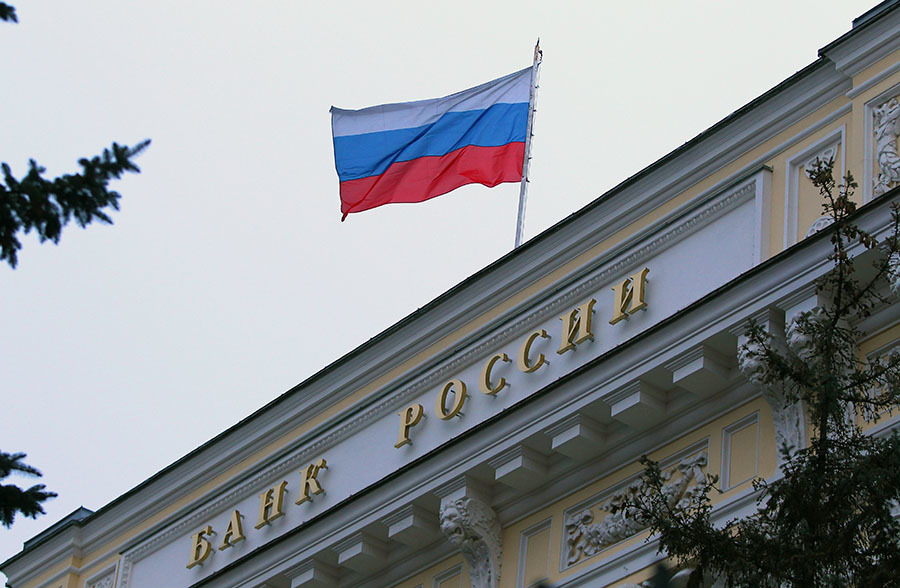On Tuesday, March 1, the Russian currency shows mixed dynamics on the Moscow Exchange.
At the opening of trading, the dollar rose by 6.5% to 100.8 rubles, and the euro by 7.1% to 113.6 rubles.
However, after that, the indicators began to decline sharply and briefly dropped to 89.09 and 100 rubles, and in the middle of the day they stabilized near 97 and 108 rubles, respectively.
The official exchange rates of the Central Bank on March 2 were set at 91.75 rubles per dollar and 102.91 rubles per euro.
The national currency is making attempts to strengthen after a noticeable weakening the day before.
Thus, during trading on February 28, the dollar and euro rates rose by more than 31% and at some point reached 109 and 122 rubles, respectively.
This happened for the first time during the observation period.
“Today, the situation on the currency markets is gradually stabilizing, as the panic among investors and citizens has begun to subside.
Moreover, the Central Bank gave a clear signal that it would support the ruble and the financial sector in every possible way, ”said Alexander Razuvaev, a member of the Supervisory Board of the Guild of Financial Analysts and Risk Managers, in an interview with RT.
It should be noted that fluctuations in exchange rates increased markedly in the middle of last week.
The reaction of the market was provoked by Western sanctions against Moscow.
On February 21, Russian President Vladimir Putin announced the recognition of the independence of the DPR and LPR, and on the 24th, the head of state announced the start of a special operation to protect the Donbass from aggression from Ukraine.
In response, the United States, the European Union and a number of other countries announced the introduction of a number of anti-Russian restrictions.
Restrictions, in particular, affected Russian companies and banks, and it was decided to disconnect some credit institutions from the SWIFT system.
To support the ruble, on February 24, the Bank of Russia began selling foreign currency from its reserves, the volume of which was estimated at $643 billion at the beginning of the month. The actions of the Central Bank were to increase the supply of foreign currency on the market and at the same time increase the demand for rubles.
Meanwhile, on the night of February 27, Western countries announced a freeze on the reserves of the Russian Central Bank.
Although, according to analysts, only half of the Central Bank reserves are subject to blocking, the regulator nevertheless decided to suspend foreign exchange interventions and use other measures to stabilize the situation on the financial market.
RIA News
© Maria Devakhina
Thus, on February 28, the Bank of Russia more than doubled its key rate, from 9.5% to 20% per annum.
The value was the highest in history.
“This decision was made in order to sharply raise the yield of savings instruments.
First of all, we are talking about deposits and bonds.
I would like to note that it is impossible to purchase bonds now, since securities are not yet traded.
But the popularity of deposits can grow significantly.
This will avoid panic and reduce the number of people who want to buy foreign currency, ”Maxim Shein, head of the investment strategies department at BCS World of Investments, told RT.
A number of Russian banks have already announced an increase in their deposit rates.
At the same time, financial institutions began to sharply raise interest rates on loans.
As Alexander Dzhioev, an analyst at Alfa Capital Management Company, explained in a conversation with RT, the rise in the cost of loans should somewhat weaken economic activity in the country, which will help curb inflation.
Help from business
In addition, amid the suspension of foreign exchange interventions, the authorities decided to oblige exporters to sell 80% of their foreign exchange earnings credited from January 1, 2022.
The corresponding decree was signed by the president on February 28.
“Foreign sales by Russian companies should work as a stabilizing mechanism.
Since now the Central Bank does not have the opportunity to intervene in the main trading pairs, exporters take on this role.
According to our calculations, they can sell up to $1.5 billion a day while maintaining export volumes, which should help stabilize the exchange rate,” Alexander Dzhioev explained.
Against the backdrop of the imposition of sanctions, the Bank of Russia also canceled trading in securities on the Moscow Exchange on February 28 and March 1.
In addition, the regulator banned foreign investors from selling Russian stocks and bonds.
“Previously, foreign players carried out various operations with Russian securities, for example, they sold them for rubles, transferred money into foreign currency and took them abroad.
This created additional demand for the currency and a burden on the ruble.
Now this is gone, which allows us to reduce pressure on the ruble and support it,” explained Alexander Razuvaev.
To a certain extent, high oil prices also have a positive impact on the ruble, analysts say.
To date, the cost of raw materials remains above $100 per barrel.
Although oil quotes no longer have a direct impact on the Russian currency through the fiscal rule, rising prices allow exporters to earn higher profits.
“The higher the prices for export goods, the greater the amount of currency our companies will sell under the new decree.
This also helps to stabilize the exchange rate,” Alexander Dzhioev concluded.

